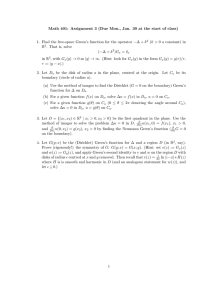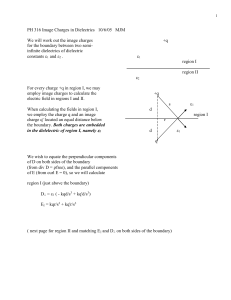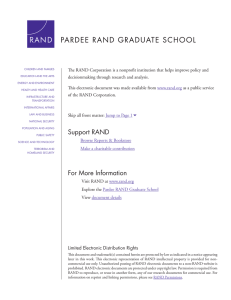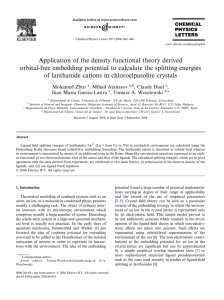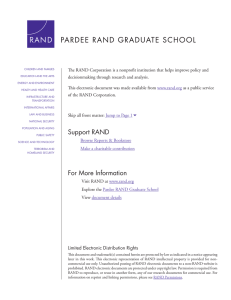PH 316 MJM Images in Dielectrics 11/09/03 rev 2
advertisement
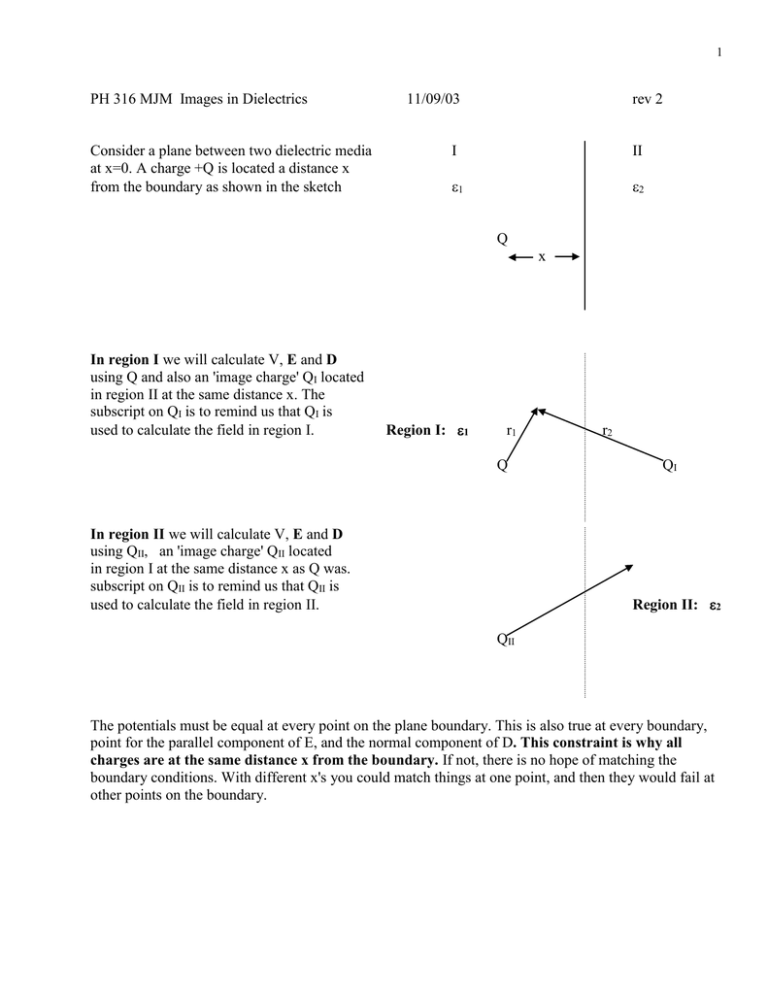
1 PH 316 MJM Images in Dielectrics Consider a plane between two dielectric media at x=0. A charge +Q is located a distance x from the boundary as shown in the sketch 11/09/03 rev 2 I II 1 2 Q x In region I we will calculate V, E and D using Q and also an 'image charge' QI located in region II at the same distance x. The subscript on QI is to remind us that QI is used to calculate the field in region I. Region I: 1 r1 Q In region II we will calculate V, E and D using QII, an 'image charge' QII located in region I at the same distance x as Q was. subscript on QII is to remind us that QII is used to calculate the field in region II. r2 QI Region II: 2 QII The potentials must be equal at every point on the plane boundary. This is also true at every boundary, point for the parallel component of E, and the normal component of D. This constraint is why all charges are at the same distance x from the boundary. If not, there is no hope of matching the boundary conditions. With different x's you could match things at one point, and then they would fail at other points on the boundary. 2 In region I, the potential is reduced by the dielectric constant, and we have VI = o/1 (kQ/r1 + kQI/r2) In region II, the potential is reduced by the dielectric constant and we have VII = o/2 (kQII/r) When we match VI and VII along the plane boundary, all the r's are equal and we have o/1 (kQ/r1 + kQI/r2) = o/2 (kQII/r) With all the r's equal we find (1) (Q + QI)/1 = QII/2. Remember that QI is used to calculate fields and potentials in region I. (It's located in II.) QII is used to calculate fields and potentials in II. (QII is located in region I) We must also match the perpendicular components of D along the boundary. I will leave this for your homework. The result is (2) Q -QI = QII Solving (1) and (2) gives QI = Q(1 - 2)/(1+ 2) equilateral triangle and Q QII = 2Q2/(1 + 2) Questions: a) When will QI be negative, if ever? (Compare to the text, p 287 ff.) b) When will QII be greater than Q, if ever? Q' 3 PH 316 Exercise with Images PH 316 11/09/03 Name_____________________ Box ______ A +6 C charge is a distance 0f 0.25 m from an infinite conducting grounded plane air a) What force does the plane exert on the charge? +6 C conductor 0.25 m b) What is the surface charge density on the surface of the conductor at a distance of 0.4 m from the charge? (in C/m2) A charge of +40 C is embedded in a dielectric of 1 = 2 o . The charge is 0.25 m from a plane boundary with an infinite dielectric of 2 = 8 o . What force is exerted on this embedded charge? 2 o 8 o 40 C 0.25 m Find the bound surface charge density b at a distance of 0.40 m from the charge on the plane surface between the dielectrics.
